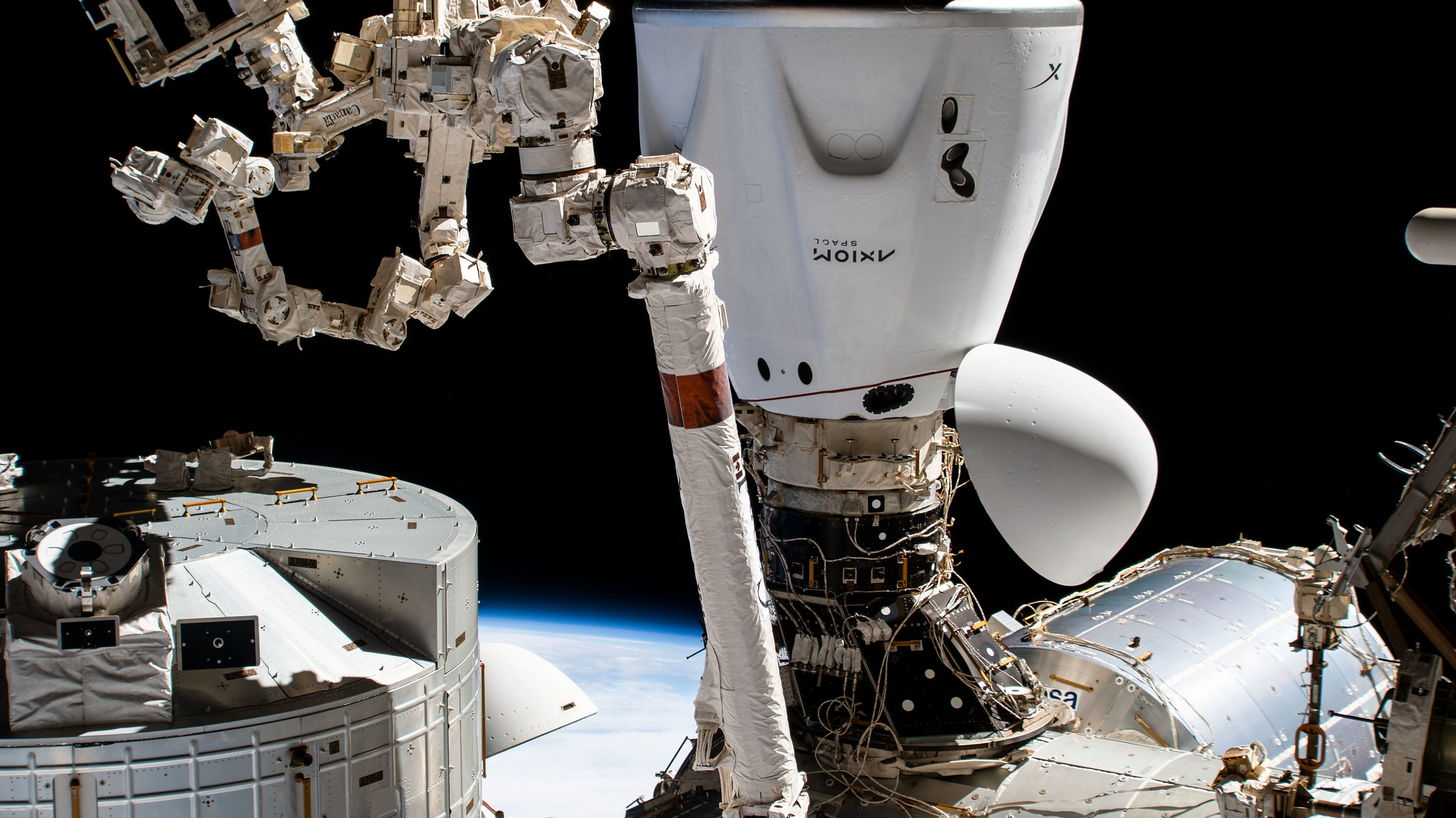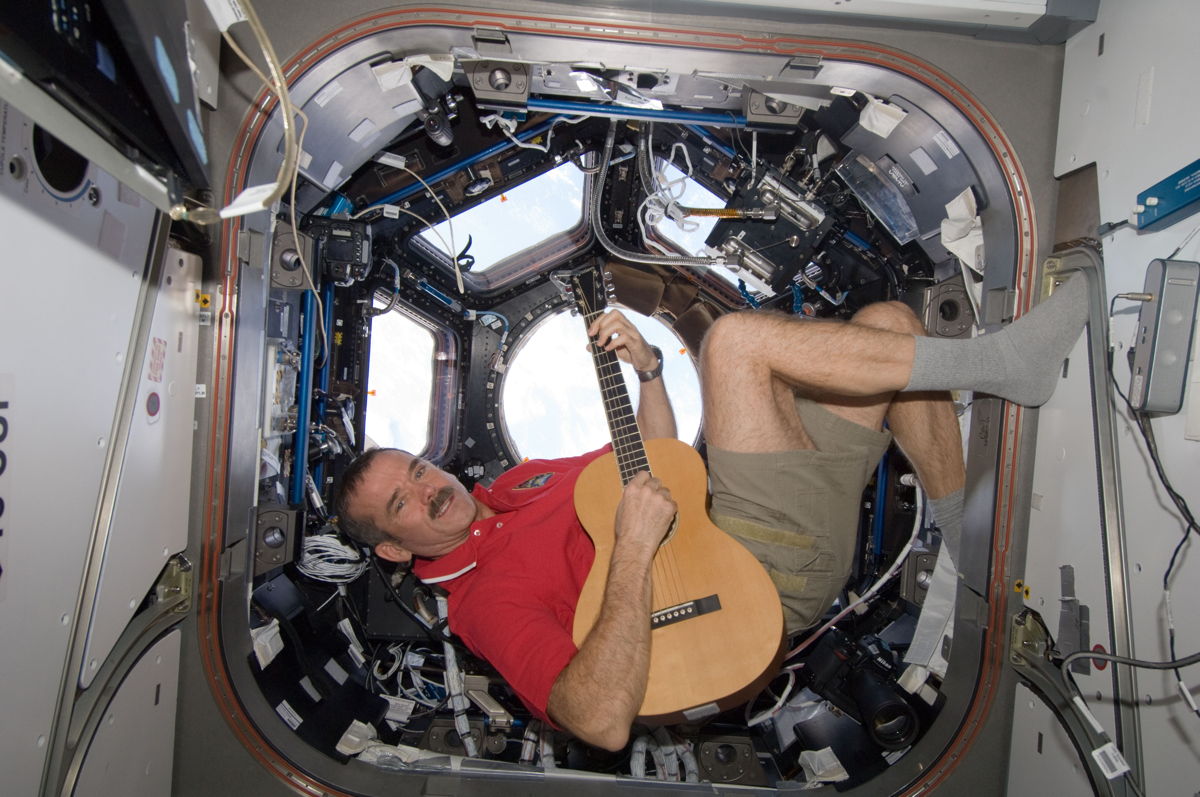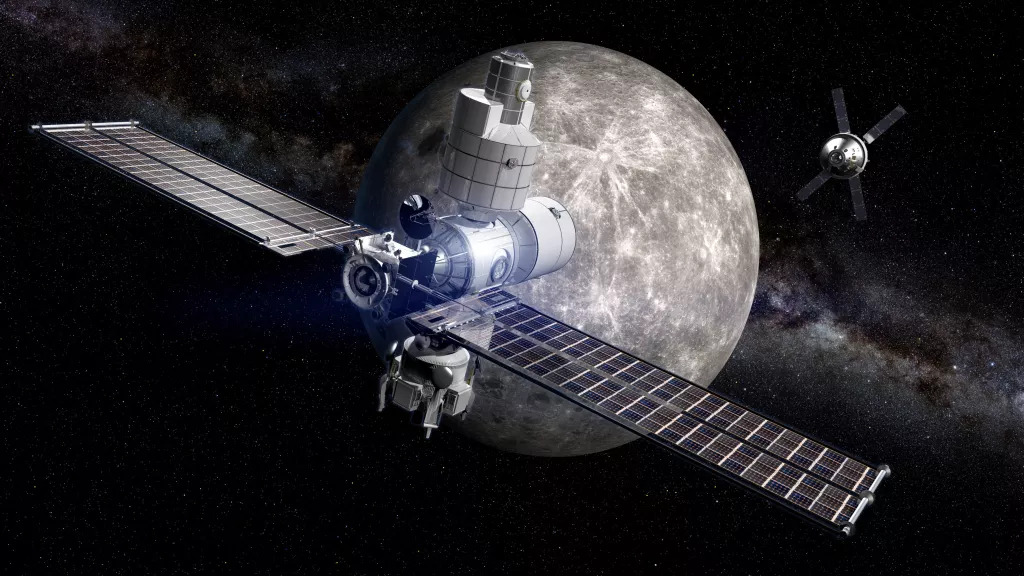Canada eyes new astronaut flights with Axiom Space
The Canadian Space Agency just signed a broad memorandum of understanding with Axiom.

Canadian astronauts may have a new pathway to exploring space.
The Canadian Space Agency (CSA) may fly hardware and astronauts aboard SpaceX spacecraft in the not-too-distant future, under a memorandum of understanding (MOU) brokered with Houston-based company Axiom Space that was announced on Wednesday (Sept. 21).
The MOU means that potentially, for the first time, CSA astronauts could fly to space on something other than a government spacecraft — and that they may get rides to orbit more often than we've seen for a while.
Axiom representatives indicated that the MOU covers possible flights to the International Space Station (ISS) and the company's own planned free-flying outpost, called Axiom Station. Additionally, they wrote, there is a "potential for Canadian astronauts to fly on future Axiom-sponsored missions."
In photos: SpaceX's Ax-1 private astronaut launch and mission
"We will explore potential collaborations with to use Canadian technology on their station. Let's continue to position innovative companies in space," the CSA said on Twitter. Additionally, agency president Lisa Campbell is pictured in the Axiom release applying her signature at the International Astronautical Congress (IAC) in Paris, which runs through Thursday (Sept. 22).
Canada's spaceflight program is nearly 40 years old, and its professional corps has seen more than a dozen people in orbit since 1984. That said, the country is small in population (with an accordingly small tax base) and relies upon other countries to provide expensive launch opportunities.
Get the Space.com Newsletter
Breaking space news, the latest updates on rocket launches, skywatching events and more!
This situation has worked out well for Canada, which contributes robotics to the ISS and other space programs and receives NASA seats on spacecraft as a result. That said, Canada's share of ISS contributions is relatively small. The country contributes roughly 2.5% of partnership allocations, which on average allows CSA astronauts a flight to space every six years or so.
CSA astronauts used to fly more often, especially during the 1990s and 2000s, when they went up more or less annually on the now-retired space shuttle. These opportunities diminished as fewer flights became available for all astronauts, as NASA prioritized long-term flights aboard ISS during the outpost's main construction phase in the 2000s.
The last CSA astronaut to reach orbit was David Saint-Jacques in 2018-2019, and previous to that, Chris Hadfield in 2012-2013. Each astronaut stayed aboard the ISS for six months, compared with a typical shuttle flight of 10 days.
In pictures: Astronaut Chris Hadfield's wacky photos from space

The next CSA astronaut flight may take place in 2024: Canada will have a seat on the Artemis 2 mission around the moon because it contributed Canadarm 3 to the forthcoming Gateway space station, which will orbit the moon in support of NASA's Artemis program. The 2024 timeline depends, however, on the successful completion of Artemis 1, which has yet to launch on its uncrewed test flight to lunar orbit as NASA troubleshoots technical glitches.
Axiom already lofted one Canadian to orbit on its 2022 debut mission, called Ax-1, But that was not for the CSA. Rather, Canadian entrepreneur Mark Pathy paid for a seat aboard a SpaceX Dragon spacecraft, joining two other commercial spaceflyers and a former NASA astronaut for more than two weeks in orbit. (SpaceX is so far the only astronaut taxi provider that has flown people to the ISS, though that may change as NASA's commercial crew program matures.)
Related: NASA awards SpaceX $1.4 billion for 5 more astronaut missions

Axiom has also been building up its robotics experience through two agreements now with MDA, which supplies Canadarm2 to the International Space Station, along with the Dextre handy robot. (MDA has also been tasked with building Canadarm3.) Axiom and MDA have announced two sales of robotic interfaces based on Canadarm3 technology, the latest of which was also announced this week at IAC.
Axiom's MOU with CSA seeks to build up Canadian work in space generally, as it aims to "leverage the existing and robust Canadian space ecosystem to mutually develop opportunities for Canadian companies across numerous sectors and industries to work and conduct research in low Earth orbit."
Canada has a small manufacturing and medical science sector also seeking opportunities for research, which may increase with the maturation of the Artemis program and the expansion of commercial research generally on ISS.
Related: NASA looks to private outposts to build on International Space Station's legacy
Next steps outlined in the MOU include establishing a working group to "develop prioritized business cases to promote Canadian technology research and experimentation in space across different fields, such as advanced robotics, AI [artificial intelligence], and health and life sciences," Axiom representatives stated in the release.
These fields of research match industry priorities already established by the Canadian government under its space strategy, which was released in 2019 to provide large-scale direction for Canadian space opportunities.
To be sure, Canadians have flown in space through alternate pathways than CSA before Pathy paid for his trip with Axiom. For example, astronaut Andrew Feustel, who helped service the Hubble Space Telescope, is one of a handful of NASA astronauts with Canadian citizenship.
Canadian billionaire Guy Laliberté paid for a trip to the International Space Station aboard a Russian Soyuz spacecraft in 2009. And "Star Trek" star William Shatner, also a Canadian, flew to suborbital space with Blue Origin last year.
This story was updated at 4:21 p.m. EDT with CSA comments on Twitter.
Follow Elizabeth Howell on Twitter @howellspace. Follow us on Twitter @Spacedotcom or Facebook.
Join our Space Forums to keep talking space on the latest missions, night sky and more! And if you have a news tip, correction or comment, let us know at: community@space.com.

Elizabeth Howell (she/her), Ph.D., was a staff writer in the spaceflight channel between 2022 and 2024 specializing in Canadian space news. She was contributing writer for Space.com for 10 years from 2012 to 2024. Elizabeth's reporting includes multiple exclusives with the White House, leading world coverage about a lost-and-found space tomato on the International Space Station, witnessing five human spaceflight launches on two continents, flying parabolic, working inside a spacesuit, and participating in a simulated Mars mission. Her latest book, "Why Am I Taller?" (ECW Press, 2022) is co-written with astronaut Dave Williams.









